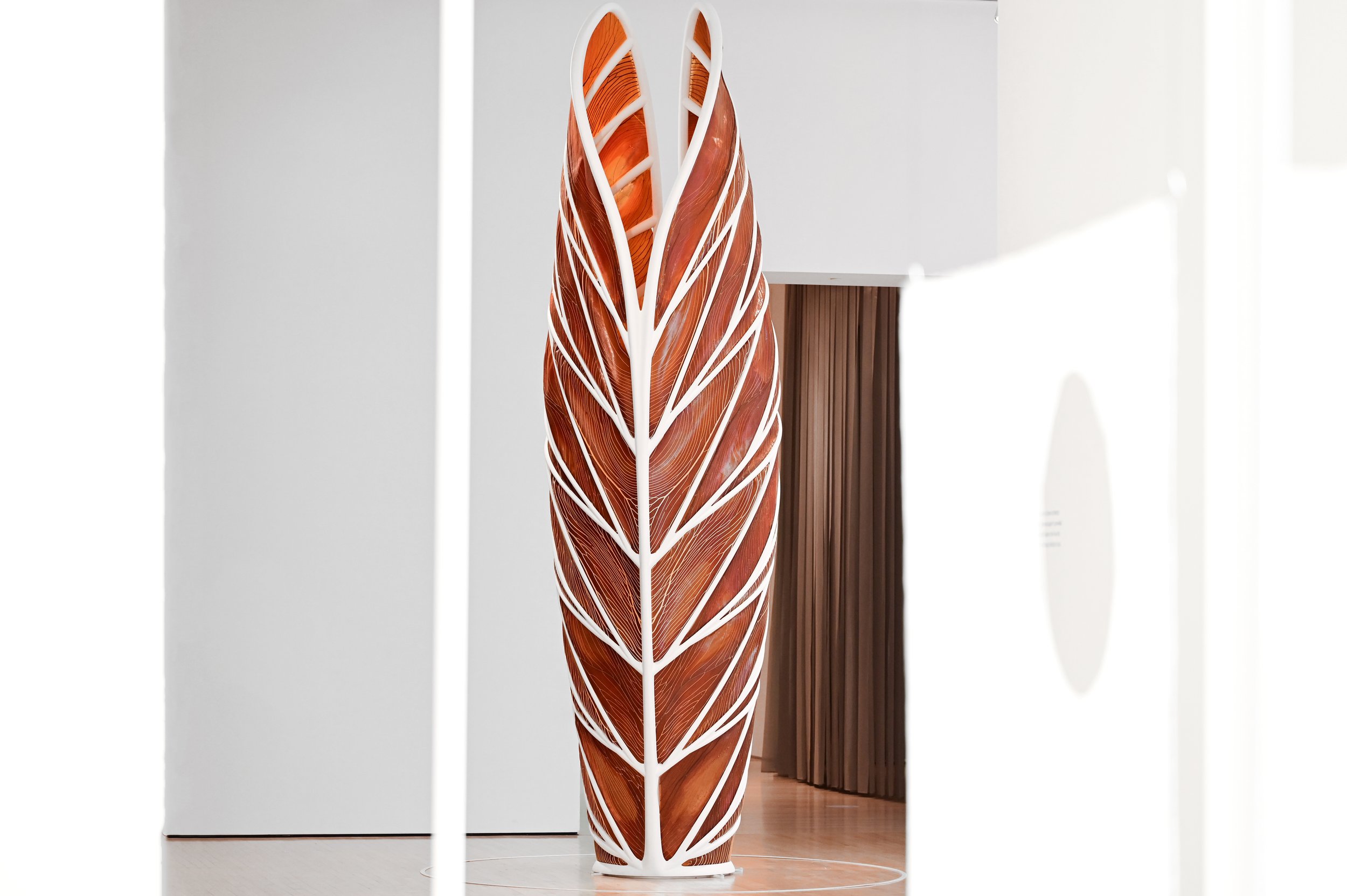
Aguahoja III
Aguahoja III expands the capabilities of a broad library of sustainable, organic 3D materials with generative patterns that countervail structural forces.
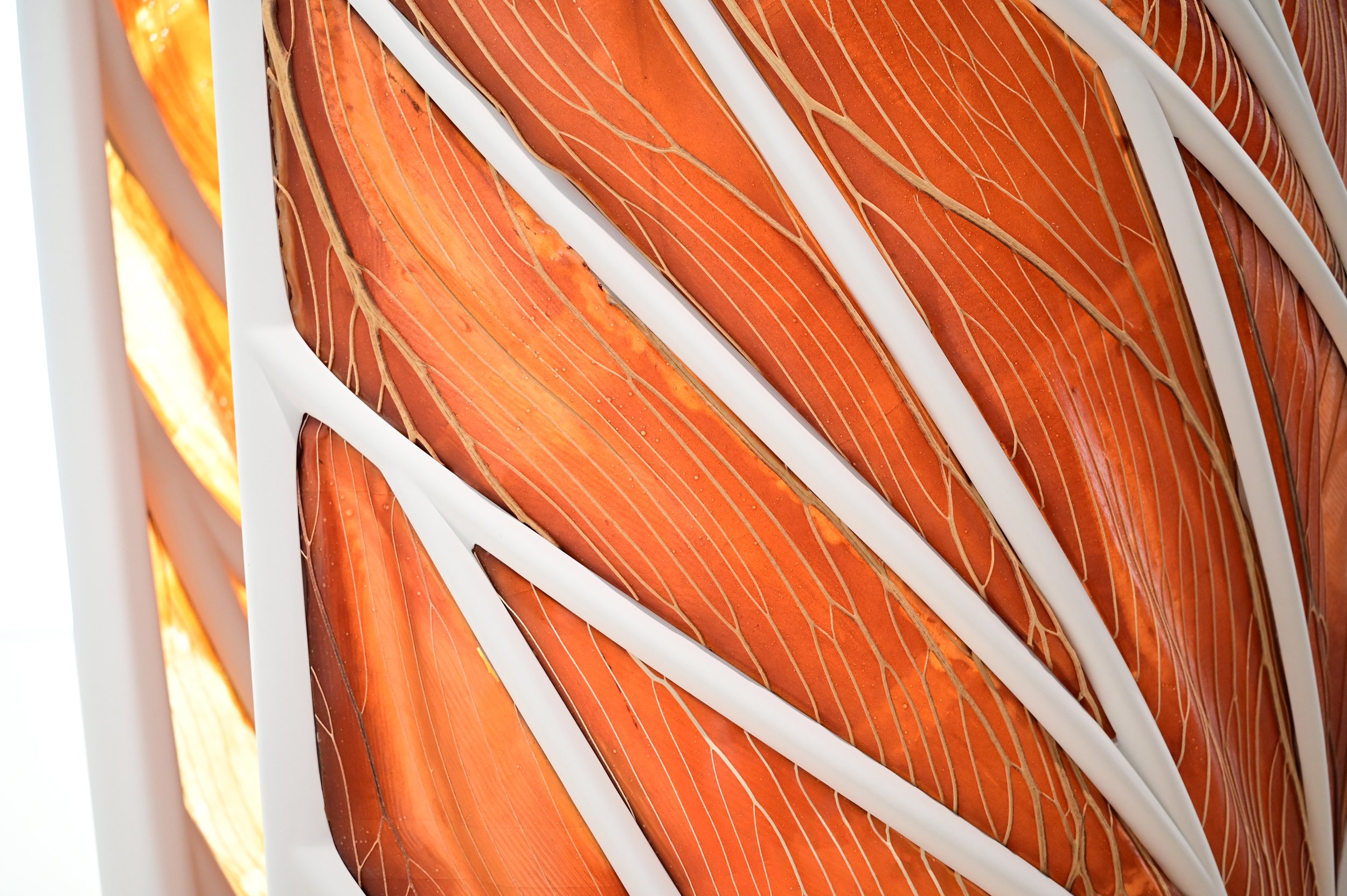
Motivation
Many natural materials are unremarkable on their own, but take on extraordinary properties when arrayed into the precise forms used by organisms. Individually weak strands of cellulose take on the strength of hardwood when bound with lignin and pectin and woven into grain. This concept of architected materials – materials that take on new properties through the interplay of chemistry and geometry – is the fundamental process by which organisms create sustainable, functional materials.
Aguahoja III expands upon the broad library of 3D printable organic composites created by Aguahoja I and II with the addition of architected anisotropic composites. These composites contain cellulose fibers that bond and align during the 3D printing process, forming tightly linked networks of reinforced materials.
Using this method, Aguahoja III demonstrates the capabilities of abundant, organic material stocks to create structural composites.
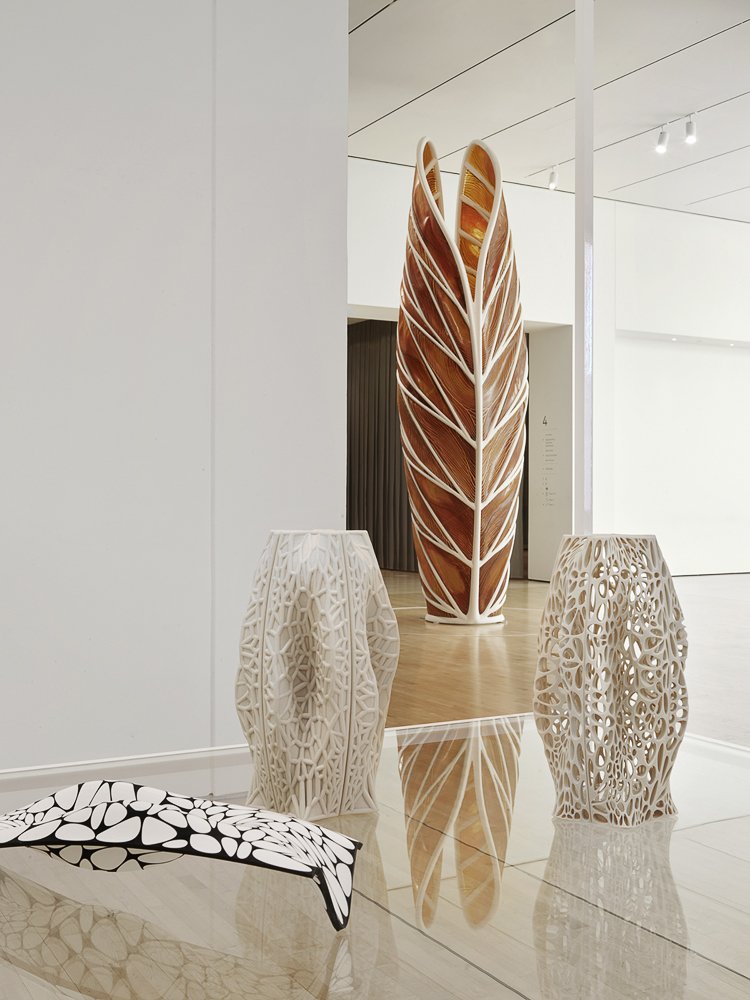
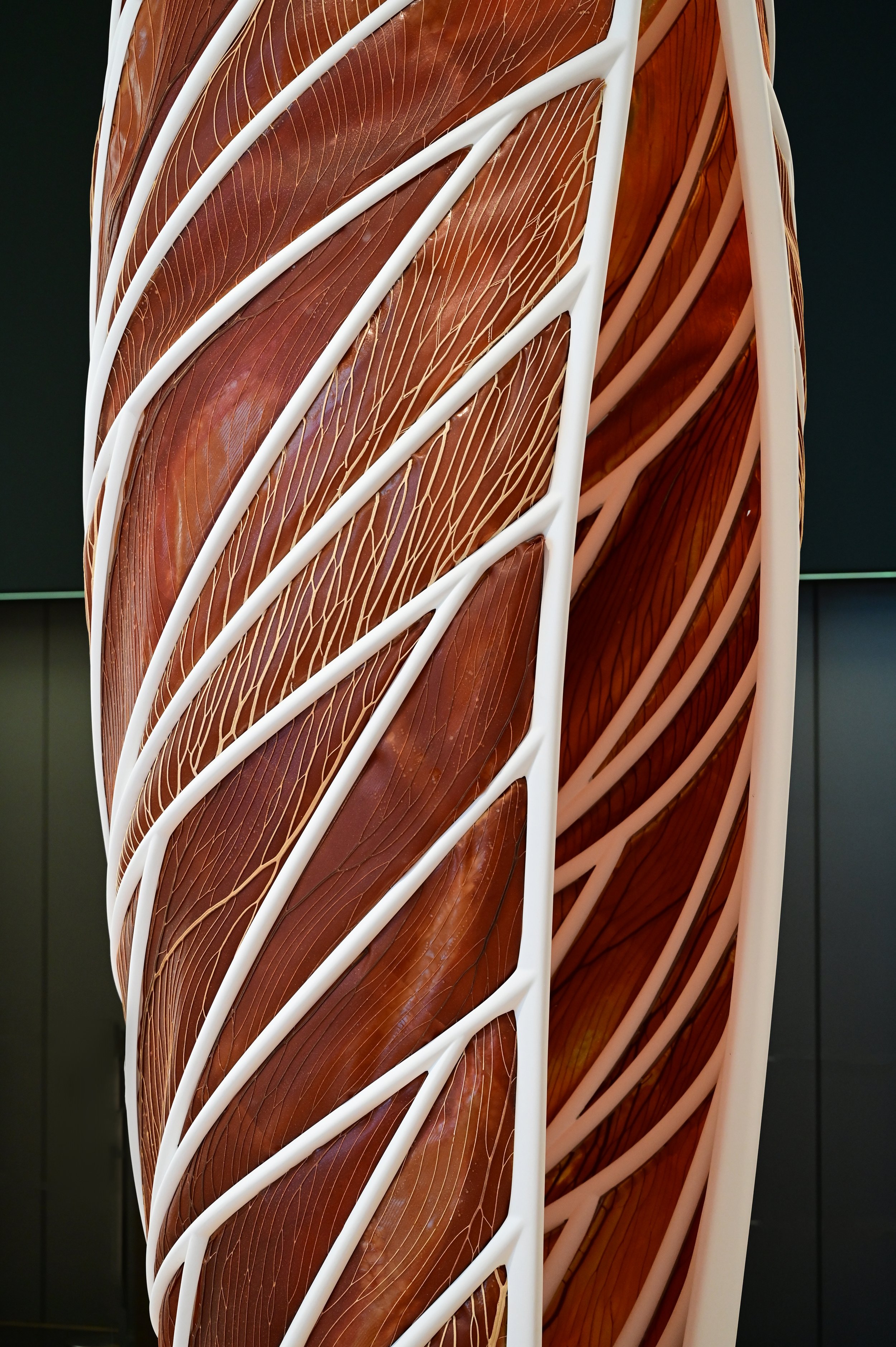
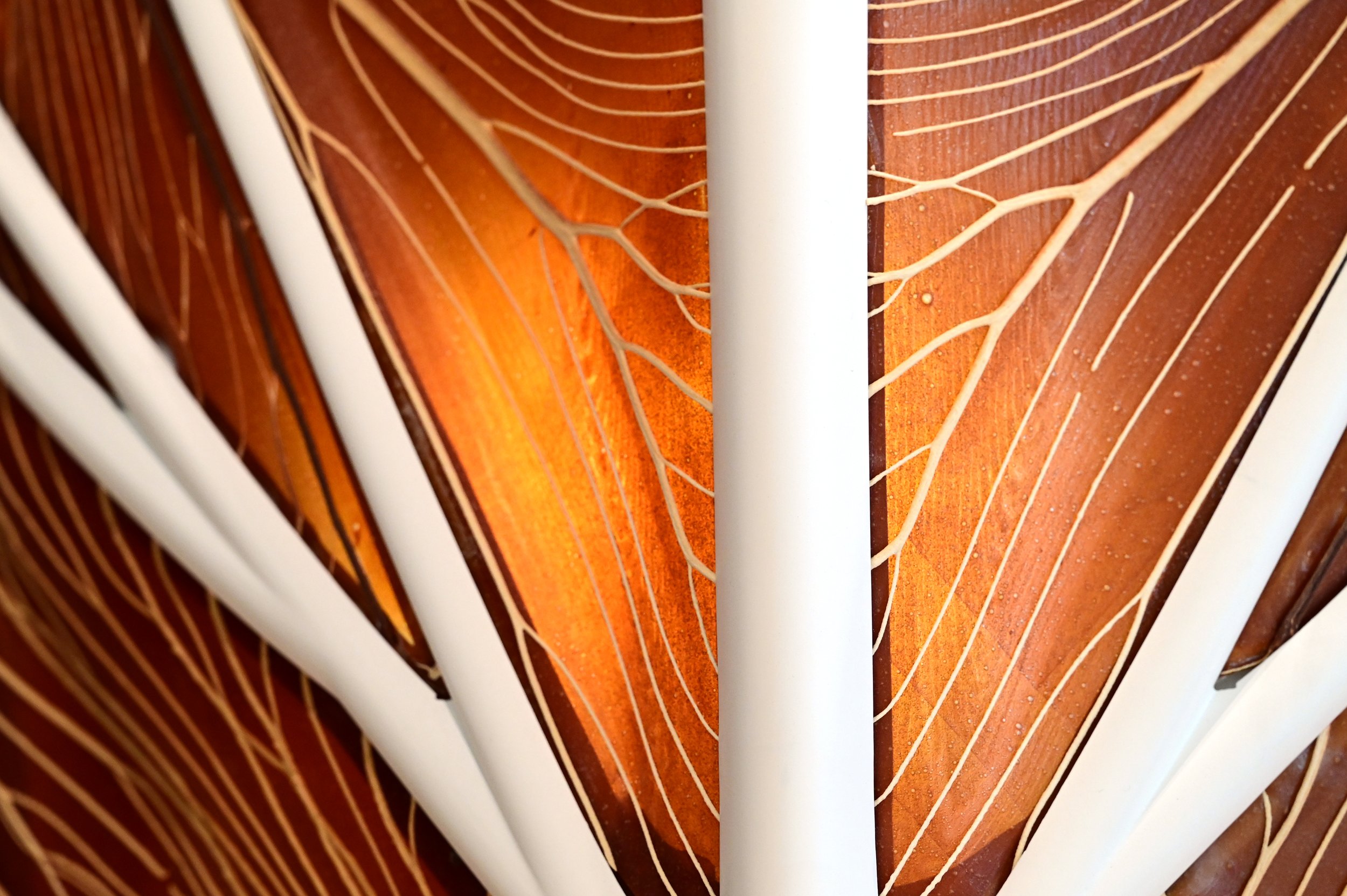
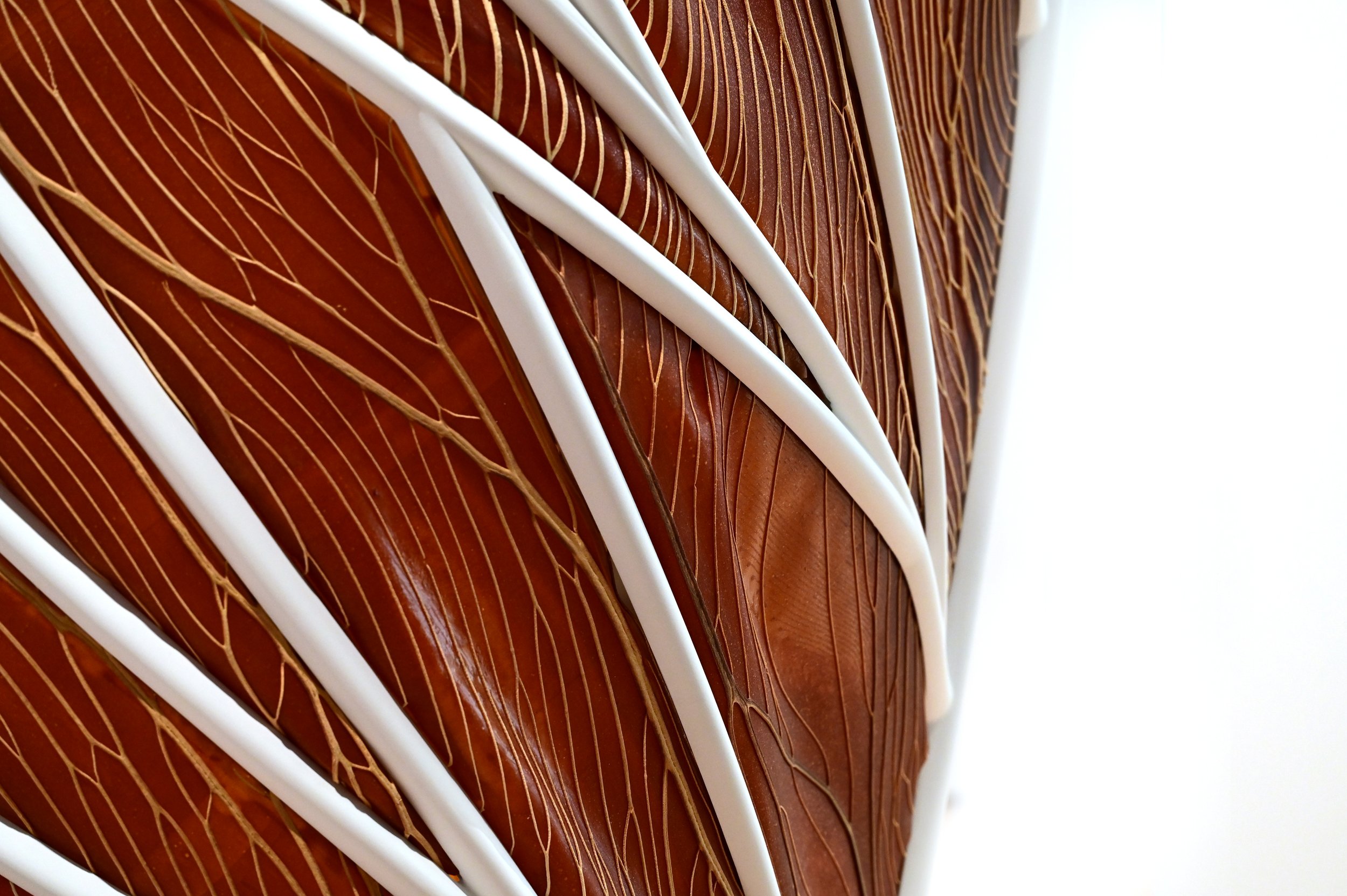
Overview
Aguahoja III was constructed in 2022 for display in the San Francisco Museum of Modern Art’s exhibition Nature X Humanity: Oxman Architects. The structure is third in a series of prototypical towers designed to demonstrate the large-scale 3D printing of organic materials. Each structure is composed of an organic skin bound to a synthetic photopolymer skeleton and stands at 5 meters tall.
The structure’s skin is made from three of nature’s most abundant materials – cellulose, chitin, and pectin. These materials are mixed into hydrogel solutions and 3D printed at room temperature without any synthetic binding agents. By tuning the ratios of each of these components, composites can be printed that are flexible and tough like leather or strong and rigid like wood. Furthermore, just as in nature, these printed composites retain their ability to react to environmental changes in temperature and humidity.
By avoiding the use of synthetic additives and using minimally refined organic matter, the organic composites printed for Aguahoja retain their ability to be decomposed and digested by organisms, transferring the nutrients and energy within them to fuel new growth. In this way, Aguahoja aims to bridge the gap between humans and non-human ecosystems, pointing towards a future where the grown and the made unite.
Digital Fabrication
Aguahoja III employs a generative design method that uses structural simulation to assign its distribution of materials and multi-scale geometry. This procedural design method can flexibly assign a biopolymer skin to any input geometry and automatically generate the material combinations, machine parameters, and toolpaths needed to fabricate the structure. This end-to-end pipeline for digital design and fabrication encompasses a flexible, automated system with tight coupling between environmental data, structural performance, and fabrication information.
The structure’s skin is comprised of a flexible base-layer and a rigid layer of reinforced veins. Containing mostly pectin and chitosan, the base-layer of the skin allocates stiff materials in areas of high structural load and flexible materials in areas of high displacement. The veins contain anisotropic cellulose fibers and chitosan which are printed in a pattern that conforms to the gradient of structural stresses to provide maximum reinforcement in areas of high load.
Materials
The cellulosic veins along Aguahoja III’s skin are formed through the novel method of Stress-Aligned Anisotropic Printing (SAAP). During the extrusion process, cellulose fibers are shear-thinned to form cross-linked bundles that align to the printed direction. These veins have increased tensile strength along this aligned printing direction. By aggregating multiple groups of veins into thickened bundles, the degree of reinforcement along these paths can be enhanced.
In contrast to conventional 3D printing, Aguahoja’s materials are printed in a semi-liquid state in which there is a high degree of cross-linking between adjacent paths. This leads to the formation of tightly bonded branches which behave as a single monolithic object where multiple paths come together.
Through the use of SAAP, Aguahoja III enables the creation of rigid structural composites with enhanced strength and directed anisotropy from a pallet of sustainable, abundant materials.
Energy and Ecology
Structures in the Aguahoja series leverage a mix of renewable and non-renewable inputs in a system with feedback flows through the decomposition of structural materials. Organic materials and their refinement account for the system’s largest energetic inputs. Approximately 13% of the system’s energy is drawn from renewable systems, substantially higher than conventional architecture but lower than agricultural systems. Despite the relatively small physical footprint of structures in the Aguahoja series, their material flows are global.
More information in Method
Aguahoja III / 2022
-
Acknowledgements
Nic Lee, Joao Costa, Felix Kramer, Hannah Gazdus, Prof. Neri Oxman.
Substructure Production
Stratasys, Ltd., Stratasys Direct Manufacturing
Further Acknowledgements
MIT Media Lab, Stratasys Ltd., Emerson Collective, GETTYLAB, Robert Wood Johnson Foundation, Stratasys Direct Manufacturing, San Francisco Museum of Modern Art
-
Publications
Manuscripts are currently in progress
-
Awards and Recognition
Exhibitions
San Francisco Museum of Modern Art, Nature X Humanity, 2022
Press
The Economist - Neri Oxman champions “new values in the art of building”





